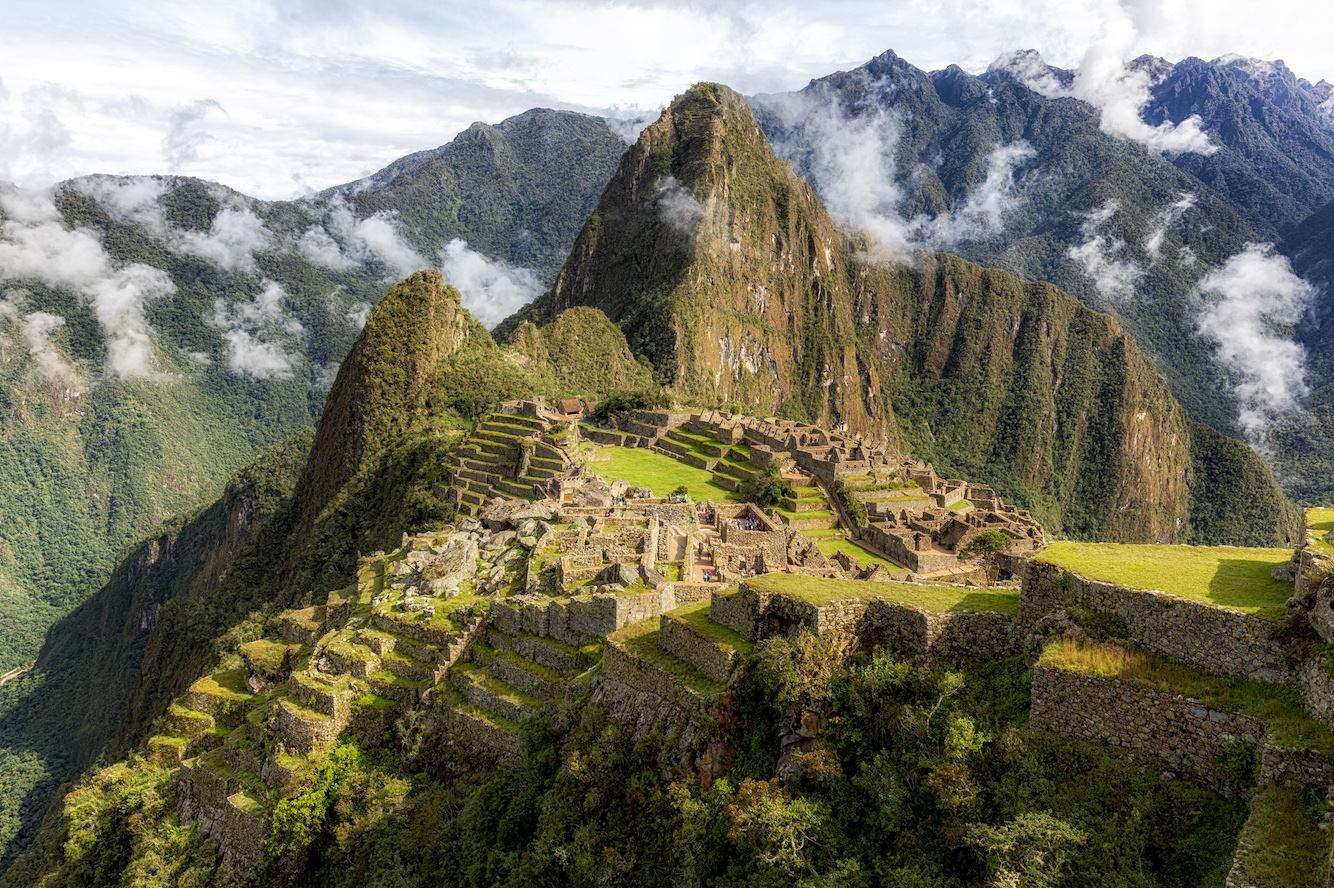
Machu Picchu, Peru, c. 1450–1540 (photo: Matthew Paulson, CC BY-NC-ND 2.0)
A royal estate
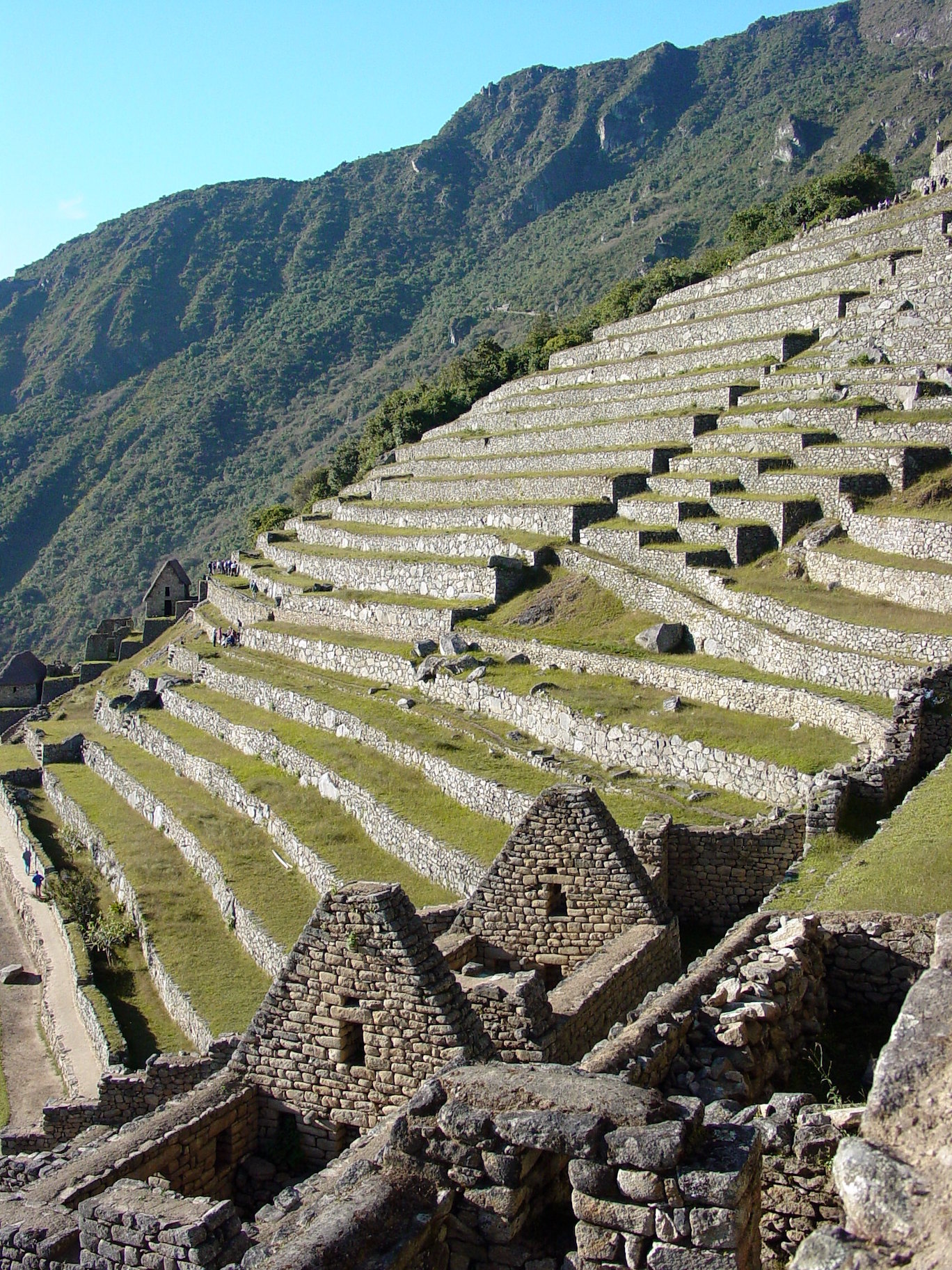
Stone terracing, Machu Picchu, Peru, c. 1450–1540 (photo: Adam Jones, CC BY 2.0)
Machu Picchu is often described as “mysterious,” but in fact a great deal is known about its construction and purpose. It was built as a royal estate for the first Inka emperor, Pachacuti Inka Yupanqui, in the middle of the 15th century, on a mountain saddle overlooking the Urubamba River (in modern day Peru). The location was approximately three days’ walk from the Inka capital of Cusco, and nearly 3,000 feet lower in elevation (7,972 feet / 2,430 meters), with a pleasant climate. It was intended as a place where the Inka emperor and his family could host feasts, perform religious ceremonies, and administer the affairs of empire, while also establishing a claim to land that would be owned by his lineage after his death. The site was chosen and situated for its relationship to the Andean landscape, including sight lines to other mountain peaks, called apus, which have long been considered ancestral deities throughout the Andes. The site contains housing for elites, retainers, and maintenance staff, religious shrines, fountains, and terraces, as well as carved rock outcrops, a signature element of Inka art.
Architecture
The site features architecture, from houses to terraces, built by carefully fitting individual stones against each other. Terraces were a common element of highland agriculture long before the Inka. They increased the arable land surface and reduced erosion by creating walled steps down the sides of steep mountains. Each step could then be planted with crops. Terracing took advantage of the landscape and provided some sustenance for the emperor and his entourage during his visits, as well as producing ritually-important maize crops. Further provisions came from the rich lands at the foot of the mountain peak, which were also beholden to Pachacuti and his family.
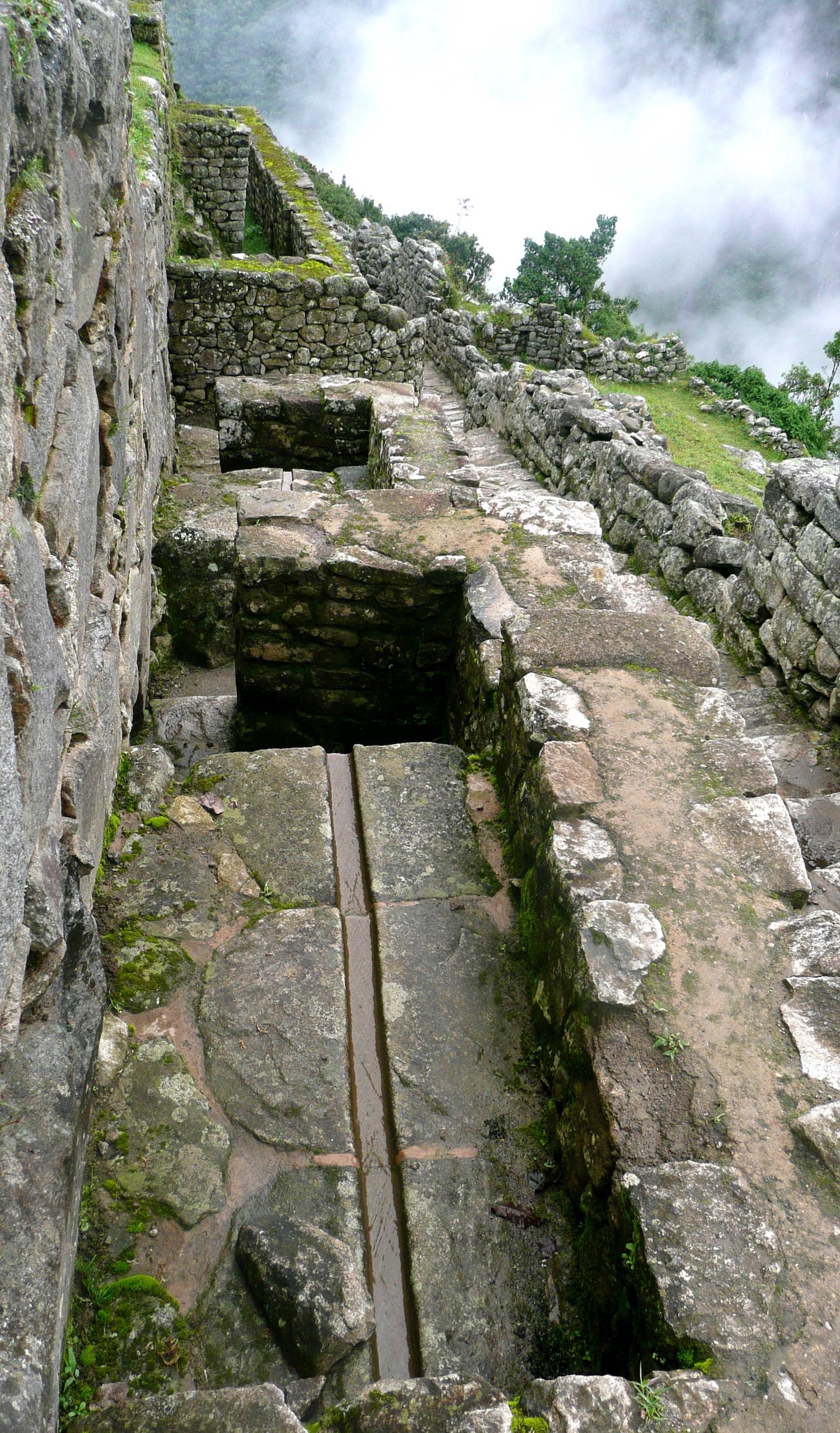
Stone channel drain, Machu Picchu, Peru, c. 1450–1540 (photo: Eduardo Zárate, CC BY-ND 2.0)
Water management at the site was crucial, and throughout Machu Picchu a system of stone channels drains water from rainfall and from a spring near the site. Some of the water was channelled to stone fountains. There are sixteen in all, descending in elevation through the site. The first in the series is placed outside the door of the emperor’s compound. That fountain is constructed with walls that may have created a ritual bath for the emperor, connected to his duties as a sacred king who performed religious rituals.
The construction of the main buildings is typical of Inka elite architecture. The walls were built of stones that had been individually shaped to fit closely with one another, rather than being shaped into similar units. This was accomplished by a laborious process of pecking at the stones with tools, gradually shaping them so that each stone was uniquely nested against those around it. Each stone had some sides that protruded slightly, and some with slight concave faces, socketing the stones so that they held together, but allowed for earthquake-damping movement in this seismically active region. Outward faces were then worked smooth, so that the walls resemble an intricate mosaic. Most structures were roofed with wood and thatch. Entryways were in the unique Inka shape of a trapezoid, rather than a rectangle. The trapezoid shape was also used for niches and windows in the walls of buildings. Buildings for people or activities of lower status were made using a rough construction technique that did not take the time to shape the stones.
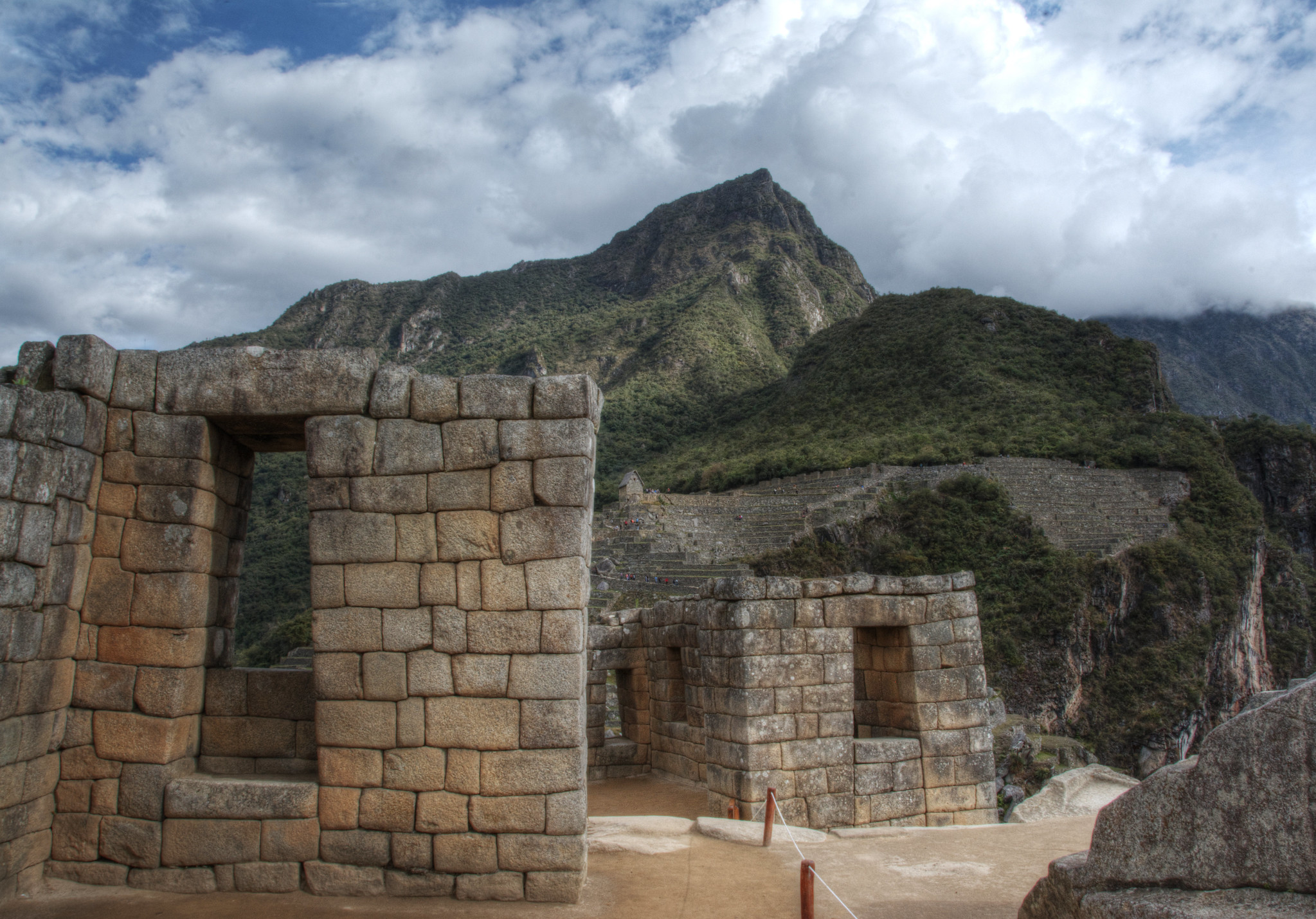
Stone walls and trapezoid-shaped windows, Machu Picchu, Peru, c. 1450–1540 (photo: Cocoabiscuit, CC BY-NC-ND 2.0)
Population and social dynamics
The emperor and his retinue would only reside at Machu Picchu for part of the year. Most of the people who lived there permanently were yanaconas (retainers) and mitimaes (colonists obligated to move to their location). Graves at Machu Picchu have yielded evidence that many of the yanaconas there were craftspeople, including metalsmiths, who came from all over the empire. The ability to command people across the empire and to oblige them to work for the Inka nobility was an expression of imperial power. The buildings of Machu Picchu clearly show the social divisions of the site, with most of the high-status residential buildings in a cluster to the northeast. The emperor himself lived in a separate compound at the southwest of the site, indicating his unique status as the ruler. The observatory was adjacent to the royal residence, emphasizing the relationship between the elites, religious ritual, and astronomical observation, including Pachacuti’s claim as both a descendant of the sun (whom the Inka called Inti) and the sun himself.
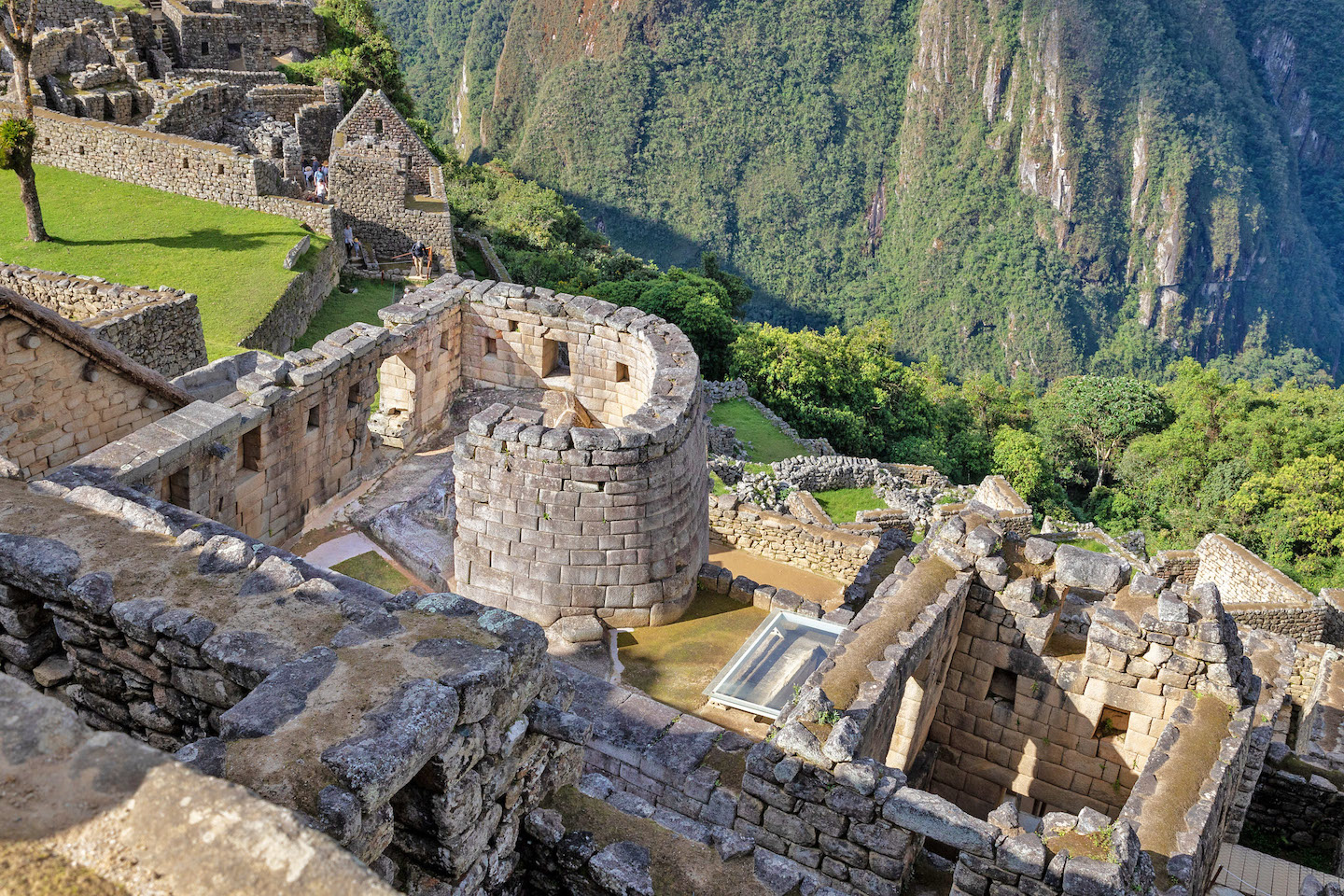
Observatory seen from above, Machu Picchu, Peru, c. 1450–1540 (photo: Brian Jeffery Beggerly, CC BY 2.0)
One of the obligations of the royal family was performing rituals that sustained relationships with the supernatural forces that drove existence. The number of religious structures at Machu Picchu is high, indicating that Pachacuti and his lineage were heavily involved in the religious functioning of the empire, a task that underscored his right to rule.
Observatory
Also called the Temple of the Sun, this building’s purpose is echoed in its unique shape. It is composed of two main parts: an upper curved stone enclosure with windows and niches placed in it, and a cave beneath this structure with masonry additions that hold more niches. Modifications of the windows in the Observatory’s upper walls indicate that they were used to calculate the June solstice, as well as the first morning rise of the constellation Pleiades and other important constellations. The cave beneath the enclosure may refer to the place of the underworld in Inka myth, making the Observatory a building that embodied cosmological thought as much as it facilitated astronomical observation.
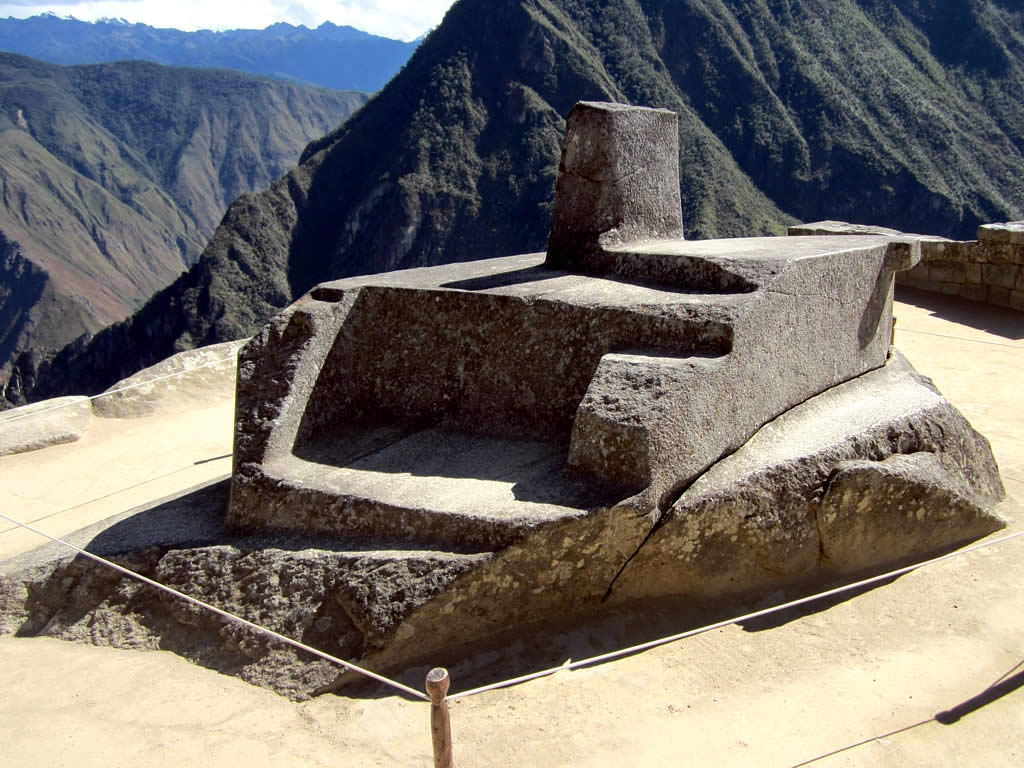
Intihuatana, Machu Picchu, Peru, c. 1450–1540 (photo: David Stanley, CC BY 2.0)
Intihuatana
The Intihuatana (“hitching post of the sun”) is a carved boulder located in the ritual area of the site, to the west of the main plaza. Carved boulders were a part of the Inka relationship with the earth, and expressions of belief in a landscape inhabited by supernatural forces. Carved boulders of this type are found throughout the heart of the Inka empire. The stone’s name refers to the idea that it was used to track the passage of the sun throughout the year, part of the reckoning of time used to determine when religious events would take place and similar to the Observatory.
Backstory
Due to its status as an important piece of both global and Peruvian heritage, Machu Picchu has recently become the focus of international attention with regard to both the repatriation of artifacts from the site, and preservation of the existing structures against environmental and human impact.
Covered by jungle and known only to locals since the sixteenth century, Machu Picchu was uncovered by Hiram Bingham III, a professor of South American history at Yale University, in 1911. In addition to the structures at the site, he and his team excavated thousands of artifacts, including ceramics, tools, jewelry and human bones, which he brought back to Yale under an agreement with the Peruvian government at the time. The agreement stipulated that the artifacts could be studied at Yale, with the provision that they could be requested and returned to Peru at any time. Since then, most of the objects have been housed at Yale’s Peabody Museum.
Despite Peru’s repeated demands for the objects’ return over the last century, it took a U.S. federal court case and the intervention of Peru’s president to finally secure their repatriation in 2010. [1] According to the Peabody museum website,
In a gesture of friendship and in recognition of the unique place that Machu Picchu has come to hold for the people of Cusco and the Peruvian nation, [Yale University] has decided to return to Peru the pieces that were excavated by Hiram Bingham III at Machu Picchu that have been conserved and maintained in the Peabody Museum of Natural History at Yale University for the last century.
[2]
The agreement has resulted in ongoing research cooperation between Yale and UNSAAC, and is an example of how repatriation efforts can lead to new and fruitful opportunities for cooperation.
The site of Machu Picchu itself is also now the focus of governmental efforts, as authorities attempt to cope with the great numbers of visitors and their impact on the site, in addition to environmental and agricultural factors that threaten the integrity of the landscape. According to the UNESCO website,
the Historic Sanctuary of Machu Picchu is among the greatest artistic, architectural and land use achievements anywhere and the most significant tangible legacy of the Inca civilization.…The strongly increasing number of visitors to the Historic Sanctuary of Machu Picchu must be matched by an adequate management regulating access.…The planning and organization of transportation and infrastructure construction, as well as the sanitary and safety conditions for both tourists and new residents attracted by tourism requires the creation of high quality and new long-term solutions, and is a significant ongoing concern.[3]
The government of Peru recently instituted a ticketing system that caps the number of visitors and requires them reserve and pay for daily time slots at the site. [4] Still, UNESCO warns that
Since the time of inscription consistent concerns have been expressed about ecosystem degradation through logging, firewood and commercial plant collection, poor waste management, poaching, agricultural encroachment…, introduced species and water pollution …, in addition from pressures derived from broader development in the region… Continuous efforts are needed to comply with protected areas and other legislation and plans and prevent further degradation.[5]
Given the number of agencies involved in planning and protecting Machu Picchu, UNESCO states, achieving an adequate master plan for the site is an ongoing challenge. Machu Picchu is only one of many such world heritage sites around the world that are dealing with the threats brought by increased visitation, and it points to the tensions between the need for everyone to enjoy and benefit from the experience of seeing these magnificent sites, and the need to preserve them for future generations.
Backstory by Dr. Naraelle Hohensee

